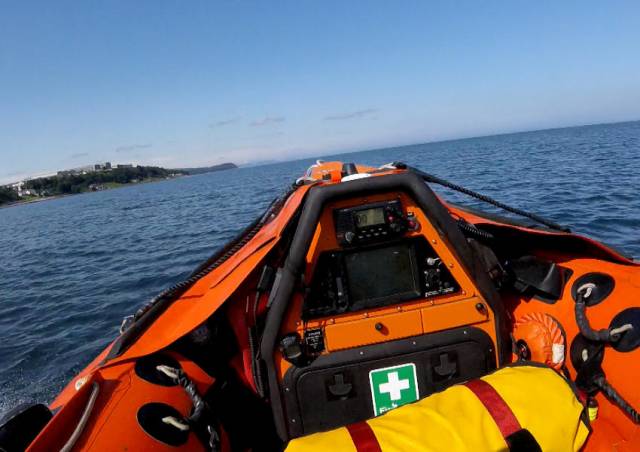Larne RNLI’s volunteer crew were kept busy with two callouts in quick succession on yesterday’s Bank Holiday (Monday 26 August), while the Portaferry lifeboat had an early-hours launch to aid a yacht run around in Strangford Lough.
Larne’s inshore lifeboat Terry launched in calm seas to reports of an inflatable driving out to sea at Ballygally beach, Larne RNLI says.
After a brief search of the area, the inflatable was recovered, deflated and returned to its own owner, who was offered some advice on water safety.
Shortly after, while the crew were recovering the inshore lifeboat at East Antrim Boat Club, reports came through from the Portmuck Coastguard mobile team of a paddle boarder in difficulty just off Muck Island, near Islandmagee.
Relaunching at 3.30pm, the lifeboat approached the island to search for the casualty and were directed to his location by a passing’s jetskier.
When the lifeboat crew reached the boarder, Larne RNLI says they learned that the man had been on the water with his two daughters and hadn’t realised the currents had been taking them further out to sea.
One of the girls made it back to shore, but the father and his other daughter were in difficulty — however, the jetskier realised their predicament and offered to take the other girl back to shore while the father called for help.
By the time the lifeboat reached him he had been fighting the currents for 45 minutes and was tired.
After assessing him for injuries, he and his board were brought into Portmuck at Islandmagee.
Inshore lifeboat helm Pamela Leitch said following the callouts: “Please be aware of the strong currents and crosswinds around our coastline. It doesn’t take much for someone to get into real difficulty when they are blown out to sea.”
Much earlier in the day, Portaferry RNLI’s volunteers were tasked by Belfast Coastguard to assist a yacht with two on board that had run aground on Roe Island in Strangford Lough.
The inshore lifeboat launched under little moonlight at 12.50am and were on scene 28 minutes later, taking the yacht under tow to a safe place to anchor.
Portaferry RNLI press officer Jordan Conway said: “The yacht’s crew made the right decision to call for help as there was a falling tide and the situation could have got a lot worse.
“We would remind everyone planning a trip at sea to always respect the water. Always wear a lifejacket, always carry a means of communication and should you get into difficulty, dial 999 or 112 and ask for the coastguard.”































































